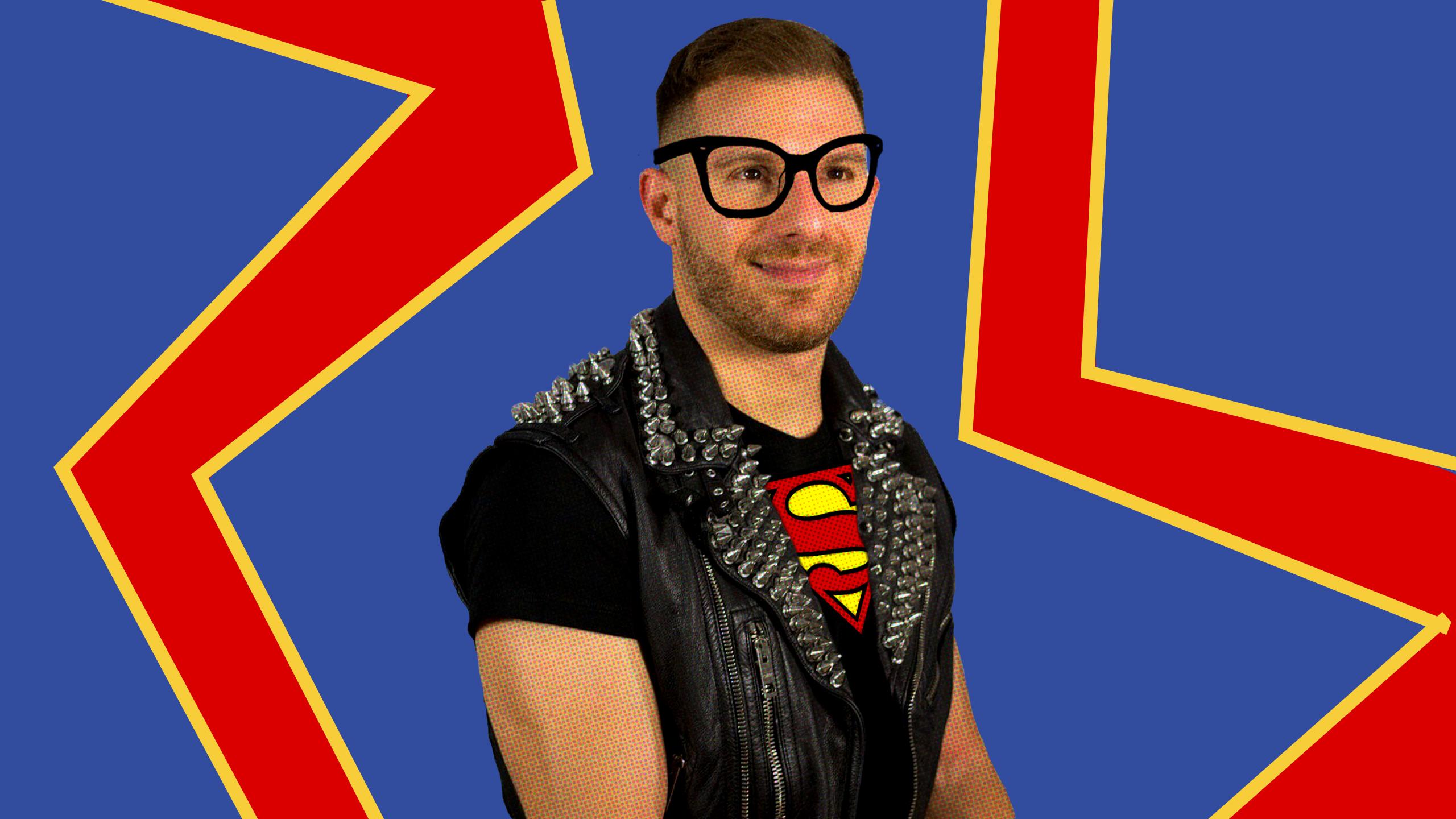By Tyler Griffin
As a child, Ben Barry loved playing dress-up. He would string together different utensils from his grandparents’ kitchen using chains to create makeshift jewelry, put on his grandmother’s silk gloves and just play, as all kids should.
It wasn’t until he reached junior high that he learned dress -up had to stop—that it would be policed by family and that it was okay in some spaces, but not in his everyday life. “I realized pretty quickly what you could do in your house, you couldn’t do in the street.”
After Barry’s friend took pricey modelling courses only to be told she was too big to ever make it, Barry took her photos and sent them to a local magazine in Ottawa. A call came from their fashion editor saying that she had booked the job and asked if he was her agent. Running with it, Barry decided to start his own modelling agency focused on diversity and inclusion in a time when models were almost exclusively tall, thin and white. He was 14.
“That one phone call certainly left me [with] is [the idea that] change is possible,” says Barry. “Changing the status quo, changing perceptions, changing worldviews, changing culture was possible—nothing was fixed.”
Now 36, with two decades in the fashion industry and a PhD from the University of Cambridge under his belt, this philosophy remains at the core of Barry’s work in fashion. Since his appointment to chair of Ryerson’s School of Fashion in fall 2018, he’s made it his mandate to revolutionize the very structure of how we teach fashion through three core values: inclusivity, sustainability and the decentralization of Western narratives in curricula. Through a string of new initiatives, courses and hires—selectively identified as global leaders addressing systemic equity issues—Ryerson is on track to becoming one of the most socially and culturally progressive fashion schools in the world. Or, as renowned fashion and race scholar and incoming tenure-track assistant professor Kim Jenkins likes to call it, “the ‘Justice League’ of fashion.”
“This is what we can do well. We can lead the industry by emphasizing these three principles,” says Barry. “We don’t need to copy what they’re doing. That’s what we could offer the global fashion industry.”
In the upcoming academic year, the department will launch its revised curriculum with five distinct concentrations, shifting away from the previous model featuring only design and communication. The new concentrations include “design leadership, fashion studies and material practices.” As the next stage in this approach, Barry says the change will allow Ryerson to make sure those three core values don’t turn into optional elective courses.
“That’s the other thing that happens. You have ‘fat fashion’ as an elective or you have ‘queer fashion’ as an elective. It’s not that those can’t be senior-level electives but that they actually become fundamentally ingrained in every core course, so those aren’t extra, but are the very foundation of what fashion is.”
On top of his role as chair, Barry still finds time to head “Refashioning Masculinity,” a research project investigating stereotypes about men and masculinity, and how their identities are constructed through fashion and appearance. In July, he announced he’d been awarded a $230,000 research grant from the Social Sciences and Humanities Research Council of Canada for another project. Looking at how fashion can be a vital tool for men and trans-masculine people who are deaf, mad or disability-identified. Cripping Masculinities will consist of wardrobe interviews, co-designing and actually bringing their dream outfits to life. Afterward, there will be a fashion show, exhibition and conference on disability in fashion to showcase the work.
On Nov. 29, the School of Fashion, in partnership with the British Council, will host “Beauty to be Recognized: A Crip Fashion Show.” Based on a mode of performance aimed at making theatre more accessible, A Crip Fashion Show will break down traditional rules and formalities associated with runway shows.
“Fashion shows are pretty inaccessible—not just from a seating perspective. If you think of all the senses, it’s going to be loud, lighting is strong, it has a strong visual component and there’s often not audio description.”
“I think disability and certainly the work I’ve done is the one area that fashion has really ignored and marginalized, and which continues to stigmatize,” he says.
Although Barry has been at the helm of revolutionizing the school and, for once, successful in challenging the rigidity of a massive institution, it takes a village. “Any kind of change is not about one person, it really is about shifting culture—and that requires community. Because if we mobilize together, we can have a bigger impact.”
“If we bring everyone together, we’re really creating that kind of transformation.”
But more than anything, Barry’s work and complete revitalization of Ryerson’s fashion department—and ultimately, the industry at large—is a case study in the need for proper representation at the decision-making table. Through lived and professional experience, Barry is able to recognize the power clothing can have in navigating different spaces. “Clothing and appearance and aesthetics is how the world has fixed people into boxes,” says Barry.
“There’s a lot of harm and violence and destruction when we put people in these categories and boxes. But fashion is one of the most powerful forces to [change] that.”










Leave a Reply